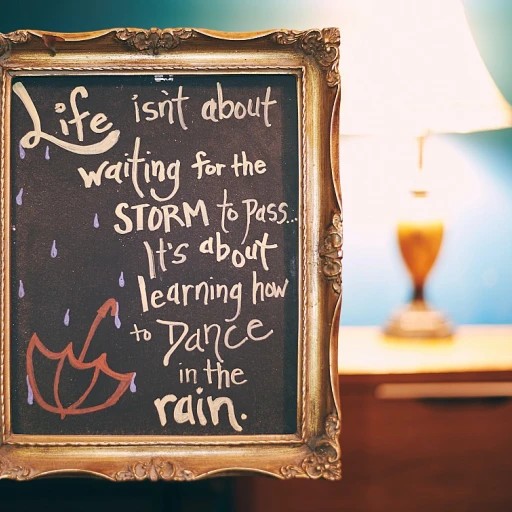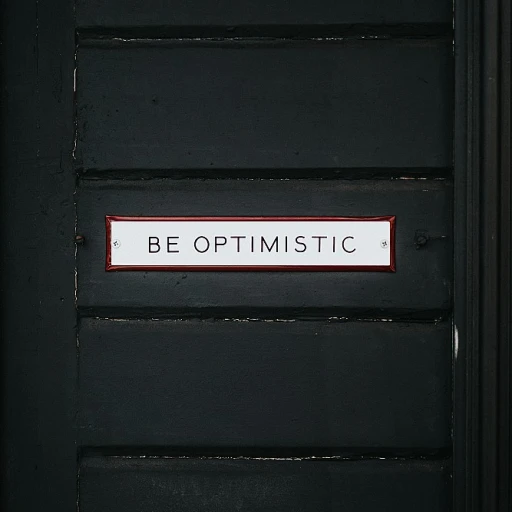
Understanding the Core Areas of Knowledge
Delving into the Foundations of Knowledge
Continuous learning is an ever-evolving journey, and understanding its core areas is crucial for anyone looking to expand their intellectual horizons. The Theory of Knowledge (TOK) provides a framework that helps us explore various domains, including the natural sciences, human sciences, arts, and history. Each of these areas offers unique insights and methods that contribute to our overall understanding of the world.
The natural sciences, for instance, rely on empirical evidence and scientific methods to uncover the laws governing the universe. This area of knowledge emphasizes the importance of observation and experimentation, providing a solid foundation for understanding complex concepts. On the other hand, the human sciences focus on human behavior and social structures, offering a different perspective on how we interact with each other and our environment.
In the realm of the arts, creativity and expression take center stage. This area encourages us to explore human emotions and cultural narratives, enriching our understanding of diverse perspectives. History, meanwhile, provides a chronological account of human events, helping us learn from past experiences and shaping our future decisions.
To truly grasp these areas of knowledge, students must engage with various examples and exhibitions that illustrate the interconnectedness of these domains. The TOK exhibition, for example, showcases how different areas of knowledge can be applied in real-world scenarios, enhancing our comprehension of complex issues.
By examining these core areas, learners can develop a well-rounded understanding of the nature of knowledge. This exploration not only aids in writing a compelling TOK essay but also equips individuals with the skills needed to navigate the complexities of modern life. For more insights on how personal experiences can enhance your learning journey, consider exploring harnessing knowledge and personal experience in continuous learning.
The Role of Interdisciplinary Learning
The Synergy of Interdisciplinary Learning
Interdisciplinary learning plays a pivotal role in continuous learning, bridging various knowledge areas and offering a more holistic understanding of complex topics. By blending elements from the natural sciences, human sciences, arts, and mathematics, learners can approach challenges with a broader perspective. This approach allows the examination of knowledge through multiple lenses, fostering a deeper comprehension which is not confined to a single discipline.
Consider the natural sciences and human sciences. While natural sciences might focus on experimental methods and empirical evidence, human sciences lean towards understanding human behavior, cultural dynamics, and history. By integrating these fields, students can better appreciate the complex interplay between scientific facts and human contexts, as explored in the Understanding Leadership in the 21st Century.
When we delve into arts and history, these disciplines enrich our grasp of cultural significance and historical perspectives. For example, arts can serve as a medium for expressing historical narratives, while history provides the context for understanding artistic evolution. This combination promotes a more nuanced interpretation of the world around us.
The application of interdisciplinary learning is also evident in practical scenarios, where knowledge from diverse areas converges to solve real-world problems. For instance, scientific research often incorporates insights from both scientific methods and human behavioral studies to develop solutions that are both innovative and applicable. This integrated approach is essential for addressing knowledge questions that require a multifaceted perspective.
Moreover, integrating these concepts into curricula can enhance students' critical thinking skills and ability to synthesize information across various areas. This method not only enriches their understanding but also prepares them to tackle the complexities of modern-day challenges.
Adapting to Technological Advancements
Embracing Technological Innovations
In the realm of continuous learning, the rapid pace of technological advancements plays a pivotal role in shaping the acquisition and application of knowledge. Embracing digital tools and leveraging online platforms not only enhances the traditional learning methods but also introduces new avenues for exploration across various knowledge areas such as the natural sciences, mathematics, and the human sciences.
Technological innovations have expanded the boundaries of how we perceive and understand human behavior and natural phenomena. With access to an abundance of data, learners can now delve deeper into scientific concepts that were previously difficult to grasp. For instance, virtual simulations and AI-driven models offer practical examples and demonstrations that enrich the learning experience in areas like the arts and history, as well as the sciences.
Moreover, technology facilitates interdisciplinary learning by connecting diverse areas of knowledge, such as blending arts and sciences, enabling students to approach problems with a more holistic perspective. This is essential in preparing them for real-world applications, where complex issues demand an integration of knowledge from multiple domains.
Another intriguing aspect is the role of technology in enhancing assessments and interactive discussions, such as the TOK exhibition and TOK essay. Digital tools provide new ways for students to present their understanding of theory of knowledge, whether through interactive panels, multimedia essays, or virtual exhibitions. This transformation not only facilitates deeper engagement but also fosters a better grasp of optional themes, such as the interplay of culture and ethics.
As these technologies continue to evolve, the challenge lies in effectively integrating them into educational environments while ensuring that learners develop critical thinking skills. It is crucial to provide balanced exposure to both technological and traditional learning methods, promoting a comprehensive understanding of both natural and human sciences.
For those seeking to maximize their learning potential amidst these technological advancements, exploring resources like learning consultant services can offer personalized strategies and insights. Such guidance is invaluable in navigating the complex landscape of continuous learning, equipping students and professionals with the tools they need to thrive in their respective fields.
Cultural and Ethical Considerations
Embracing Cultural and Ethical Implications in Learning
The pursuit of knowledge is not isolated from cultural and ethical dimensions. These considerations are integral to various disciplines, from natural sciences and mathematics to the arts and humanities. An understanding of cultural influences is crucial for students aiming to fully grasp the interconnectivity between these knowledge areas. Human understanding and behavior often reflect cultural backgrounds, and this is evident in how knowledge is perceived and applied across different fields. The theory of knowledge, or TOK, provides a framework to assess these influences by examining how our cultural biases affect our engagement with distinct areas such as history, human sciences, and the arts. For instance, the TOK exhibition offers an opportunity to explore knowledge questions through real-life examples, shedding light on how cultural contexts shape our interpretation of information. Ethical considerations also play a significant role in continuous learning, particularly within the natural sciences and human sciences. As learners encounter complex ethical dilemmas, they must evaluate the implications of their decisions on both a micro and macro scale. Engaging in TOK essay discussions can further enhance this understanding, fostering a reflective approach to how ethical perspectives are integrated within each knowledge area. In conclusion, recognizing and navigating cultural and ethical landscapes is essential for effective knowledge acquisition. As students delve into these areas, they develop a more holistic perspective on the various methods and concepts that drive human progress. Ultimately, these considerations enrich the learning experience, equipping individuals with the ability to apply their knowledge responsibly and thoughtfully.Practical Applications in Real-World Scenarios
Utilizing Knowledge in Everyday Contexts
Applying acquired knowledge in practical scenarios is an essential aspect of continuous learning. Whether it's in mathematics, science, or the arts, understanding how these areas interplay in real-world situations enriches learning experiences and fosters deeper comprehension. Humans, as inherently curious beings, benefit from exploring how theoretical concepts align with everyday realities.
Consider how the natural sciences offer insights into environmental challenges, providing students with the ability to propose solutions grounded in scientific methods. In the humanities, disciplines like history and the arts provide a profound understanding of human behavior and cultural dynamics. This knowledge, fused with an appreciation for ethical considerations, equips individuals to navigate the complexities of modern society effectively.
Moreover, interdisciplinary approaches can enrich learning outcomes. As highlighted in interdisciplinary learning discussions, connecting different areas of knowledge aligns with nature’s holistic nature. For example, combining natural sciences with history can unveil patterns and trends in human evolution and environmental impact.
Real-world exhibitions and projects serve as practical platforms to demonstrate the synthesis of various knowledge areas. Engaging in such initiatives enhances students' understanding and enables them to develop their expertise across diverse disciplines. This approach mirrors the Theory of Knowledge (TOK) concepts, where understanding and knowledge application are crucial.
In everyday professional and personal contexts, knowledge of sciences, arts, history, and other domains empowers individuals to address challenges with informed perspectives, making continuous learning a lifelong journey of discovery and application.
Strategies for Effective Knowledge Acquisition
Developing Proficient Knowledge Acquisition Techniques
Continuous learning demands effective strategies to efficiently acquire and apply new knowledge across various domains. Here are some practical methods that enhance understanding and retention:- Active Engagement: Genuine engagement involves exploring key areas of knowledge actively rather than passively consuming information. For instance, in subjects such as natural sciences and human sciences, engaging with the content through discussions or practical demonstrations can significantly improve comprehension.
- Interdisciplinary Approaches: Bridging the gap between areas like arts and mathematics fosters a more holistic grasp of concepts. For example, employing art to visualize mathematical concepts can make them more tangible for students and educators alike. Encouraging this cross-disciplinary interaction nurtures a broader perspective.
- Application of Knowledge: Implementing theoretical knowledge in real-world scenarios reinforces learning. Real-world exhibitions and practical experiments in understanding sciences natural or human behavior provide concrete examples that can bridge the gap between theory knowledge and application.
- Reflection and Assessment: Regular reflection on new insights and periodic assessment through tools such as TOK essays or exhibitions can refine understanding and challenge existing knowledge areas. By doing so, learners can identify knowledge questions and address any gaps in their understanding.
- Leveraging Technology: As discussed in adapting to technological advancements, digital platforms and tools can aid in the effective distribution of knowledge. They offer an array of resources that cater to different learning preferences, thus enhancing the overall learning process.
- Collaboration and Discussion: Engaging in collaborative dialogue with peers or experts in fields such as arts, history, and sciences extends one's understanding. These discussions often unveil perspectives that may not have been considered before, contributing to a richer pool of knowledge.












